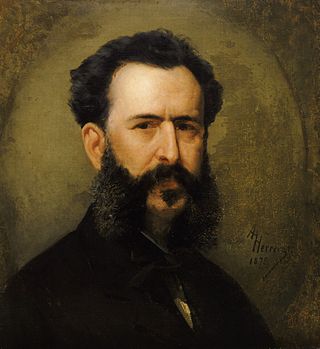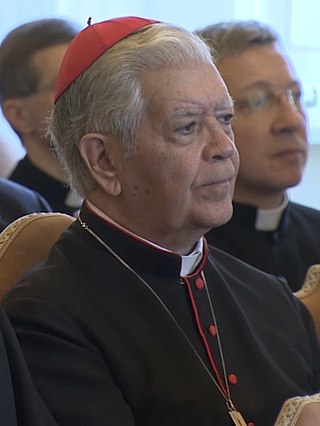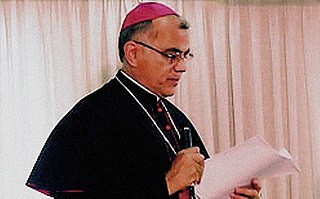History
The Colegio Italo venezolano "Nuestra Señora de Pompei" was created in the early 1960s by the catholic fathers Scalabriniani to meet the educational and catholic needs of the Italian community in eastern Caracas. [2] The initial courses of the Scuola Elementare Pompei (as was called, because it had only primary courses for 47 Italian kids) were in Italian language with some Spanish lessons, but after a few years all the courses were bilingual in Spanish and Italian.
In 1962 the Our Lady of Pompei School is founded by his first rector, Father Ettore Rubin...This small school opened with only 47 Italian children who attended preschool and elementary school from first through 3rd grade...In just one year the Pompei family grew rapidly and space became insufficient to meet all primary students. Therefore, the College temporarily changed its headquarters to a villa in Los Jabillos, but soon the (Scalabriniani) priests acquired a beautiful mansion in the Alta Florida, which became the permanent seat of the College and the center of meeting of the faithful pilgrims from the Italian Catholic Mission, with the construction of the Pompei Church. Since 1966 until today, school and church work in the same place....By 1970, the College already offered all levels, from kindergarten to 5th year. Padri Scalabriniani [3]
The school was enlarged when was built the Pompei Church in the Alta Florida neighbourhood.
In the late 1970s it was added the "Bachillerato" (Mid-High school), that was done mainly in Spanish but with some Italian lessons. Actually the "Colegio Pompei" (as is usually called) has nearly 1000 students and all the courses are only in Spanish language.
Since 2001 Italian is done as a foreign language mandatory in kinder to mid-high school ("Bachillerato venezolano") in the so-called Programa de estudio de la lengua Italiana of the Venezuela government. Lately are celebrated some "Festivals" in the High School [4]

José Gregorio Hernández Cisneros OFS was a Venezuelan physician. Born in Isnotú, Trujillo State, he became a highly renowned doctor, more so after his death. He was beatified by the Catholic Church in 2021.
Colegio Internacional de Caracas (CIC) is a private English language school located in Caracas, Venezuela, serving the educational needs of students from pre-nursery through high school. CIC is accredited by the Southern Association of Colleges and Schools and by the International Baccalaureate Organization in its Middle Years (MYP) and the Diploma Program (DP). At the conclusion of the 2019–2020 school year, student enrollment was just over 100.
Education in Spain is compulsory and free for all children aged between 6 and 16 years and is supported by the national government together with the governments of each of the country's 17 autonomous communities.

Martín Tovar y Tovar was a Venezuelan painter, best known for his portraits and historical scenes.

Jorge Liberato Urosa y Savino was a Venezuelan prelate of the Catholic Church.

The languages of Venezuela refers to the official languages and various dialects spoken in established communities within the country. In Venezuela, Castillian is the official language and is the mother tongue of the majority of Venezuelans. Although there is an established official language, there are countless languages of indigenous villages spoken throughout Venezuela, and various regions also have languages of their own.
Colegio Humboldt, Caracas is a German school located in Caracas, Venezuela.

Pompeo D'Ambrosio.

Italian Venezuelans are Venezuelan-born citizens who are fully or partially of Italian descent, whose ancestors were Italians who emigrated to Venezuela during the Italian diaspora, or Italian-born people in Venezuela. Italians were among the largest groups of European immigrants to settle in the country. Approximately 5 million Venezuelans have some degree of Italian ancestry, corresponding to about 16% of the total population of Venezuela, while there were around 30,000 Italian citizens in Venezuela.

The Italian language in Venezuela has been present since colonial times in the areas around Caracas, Maracay, Valencia, Maracaibo and the Andes mountains. The language is found in many idiomatic sentences and words of Venezuelan Spanish. There are around 200,000 Italian-speakers in the country, making it the second most spoken language in Venezuela, after Spanish.

Christianity is the largest religion in Venezuela, with Catholicism having the most adherents.

Baltazar Enrique Porras Cardozo is a Venezuelan prelate of the Catholic Church, who was named Metropolitan Archbishop of Caracas in 2023 after serving as apostolic administrator there for four and a half years. He was auxiliary bishop of Mérida from 1983 to 1991 and then metropolitan archbishop of Mérida from 1991 to 2023. Pope Francis made him a cardinal in 2016.

The Palacio de las Academias is a Neo-Gothic building on the Avenida Universidad in the centre of Caracas, Venezuela. It dates back to 1684 when a Franciscan convent was built on the site but in the 19th century it served as a barracks, a hospital and a college. In 1876, under President Antonio Guzmán Blanco, the Universidad de Caracas was moved to the building, whose former colonial façade was rebuilt in the Neo-Gothic style. After the university relocated to a new campus in 1952, the building became home to the National Academies. In 1965, it was listed as a national monument. The Palacio de las Academias now houses six National Academies, which are the National Academy of History, the Venezuelan Academy of Language, the Academy of Medicine, the Academy of Political and Social Sciences, the Academy of Jurisprudence, and the Academy of Physics, Mathematics and Nature.
Greek Venezuelans are Venezuelan residents who are either fully or partially of Greek descent, or a Greece-born person who resides in Venezuela. They are mostly located in the north-center of Venezuela, concentrated in Caracas and Valencia.
Colegio Agustín Codazzi is an Italian international school in La Florida, Caracas, Venezuela.
Colegio Italo-Venezolano Angelo De Marta is an Italian private school in Puerto La Cruz (Venezuela).
Colegio Amerigo Vespucci is an Italian private school in Caracas, Venezuela.
Colegio Antonio Rosmini is an Italian private & religious school in Maracaibo (Venezuela), created in the 1960s by the Rosminians.
Colegio Juan XXIII is an Italian private & religious school in Maracay (Venezuela).

Italy–Venezuela relations are the diplomatic relations between Italy and Venezuela. Both nations enjoy friendly relations, the importance of which centers on the history of Italian migration to Venezuela. There are approximately over 140,000 Italians living in Venezuela with more than a million Venezuelans of full or partial Italian descent.
This page is based on this
Wikipedia article Text is available under the
CC BY-SA 4.0 license; additional terms may apply.
Images, videos and audio are available under their respective licenses.










